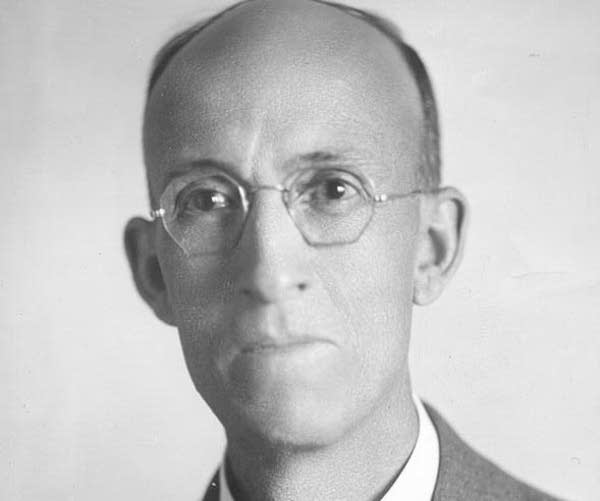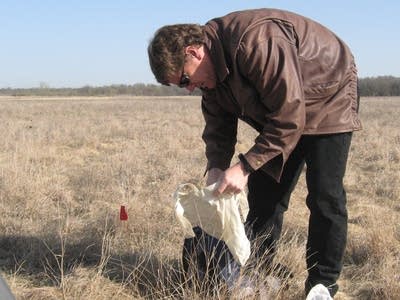Vigilant on the prairie, researchers log spring's earlier arrival
Go Deeper.
Create an account or log in to save stories.
Like this?
Thanks for liking this story! We have added it to a list of your favorite stories.

A Fargo researcher is carefully watching for signs of spring on the Minnesota prairie. He's comparing what he sees with records going back 100 years.
Based on several years of observation, it appears flowers are blooming earlier, and migrating birds are arriving sooner than in the past.
East of Moorhead, the rising sun forces Steve Travers to shuck his jacket as he walks across the Bluestem Prairie.
The North Dakota State University assistant biology professor is looking for the early signs of spring activity on this native prairie.
Turn Up Your Support
MPR News helps you turn down the noise and build shared understanding. Turn up your support for this public resource and keep trusted journalism accessible to all.
He stops next to a fuzzy light purple flower pushing its way through the mat of dead grass.
"This is Pasque Flower which is a really interesting one to me because they're usually the first thing to come up out here," Travers says. "So once this is up I know the prairie is getting ready to pop out."
The Pasque Flower is blooming about two weeks earlier than it did a century ago.
Travers knows that because of the work of O.A. Stevens.

Stevens was one of the first professors at North Dakota State University in Fargo. He begin tracking the start of spring on this prairie in 1910.
"He wrote down exactly the day that plant species would flower out here in Bluestem Prairie," Travers says. "He did it for 50 years and every year he wrote down what he saw and we have records for over 700 species during that period."
Travers compares the voluminous notes of Stevens to the work of Henry David Thoreau in Massachusetts or Aldo Leopold in Wisconsin.
"His data is really important, because he was a botanist and knew his species very well and was very detailed about writing down information on them," he says. "And we don't have much of that data for the northern Great Plains."

Travers starting documenting the arrival of spring on the prairie in 2006. He says it appears the prairie is waking up about two weeks earlier than it did over the 50 years O.A. Stevens kept records.
Travers says such long term research is done less often now because academic researchers are under constant pressure to publish new research.
"In a way you can almost be punished because if you take 10 years to publish a paper, that's not good," he says. "I think the trick is to balance projects and find out what you can over the short term but keep the long term going in the background. And you get some really good rewards out of that."
Travers says he hopes to identify species of plants and birds to focus on. He wants to know how earlier blooms or migration affects the ecosystem.

He says birds arriving earlier might find the insects they depend on for food haven't hatched yet. Plant species adjust to the warming climate at different rates. That means two unique species might begin blooming at the same time.
"And if pollinators are visiting both you can start to have hybridization where you never used to have it and you can assimilate one species into another," Travers says. "That's apparently going on with some clover in northern Minnesota. They're seeing a rare one start to get taken over by a more common one because there's pollen exchange going on that never used to go on."
Travers says there are also more invasive plants showing up in northern climates. Kentucky bluegrass is starting to take hold in native prairies.
The data Travers collects here is shared with a national network of scientists. Travers is trying to recruit volunteer phenologists -- people who study timing in nature -- to help accumulate more data. He's created a [[link:http://www.ndsu.edu/biology/phenolog/ type:ext text:website where people can enter their own observations]].
"If we want to know when, let's say, Brewers blackbirds arrive here migrating in the spring ... If it's just me coming out here once a week I might catch it, I might not," he says. "Whereas if we have 100 people on the way to work watching and they see a Brewers blackbird and funnel that into the data set, that's really great."
Travers may never gather the 50 years of detailed observations collected by O.A Stevens in the early to mid 1900s, but he hopes to hike the Bluestem Prairie for many springs to come, documenting the effects of climate change.




